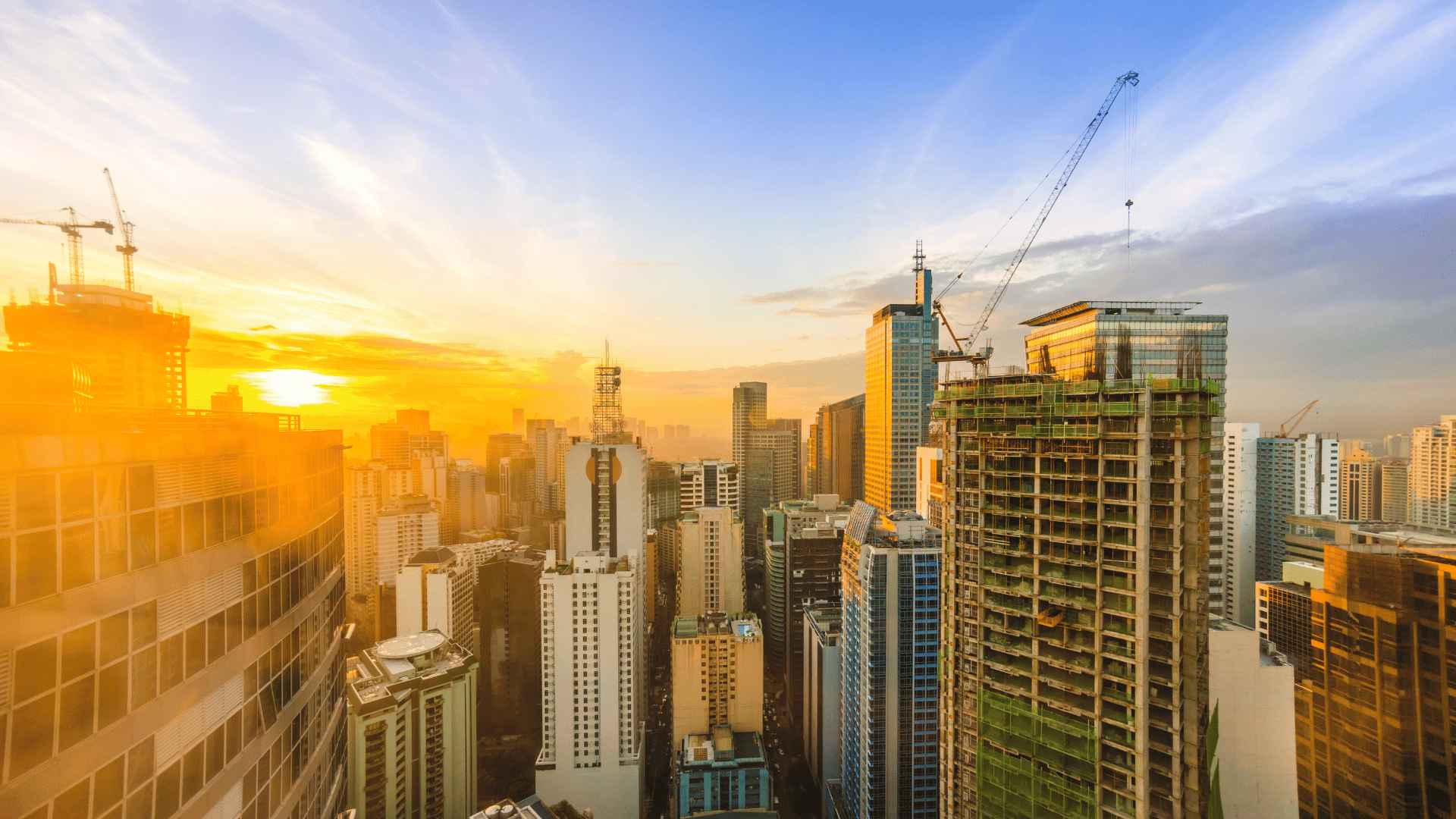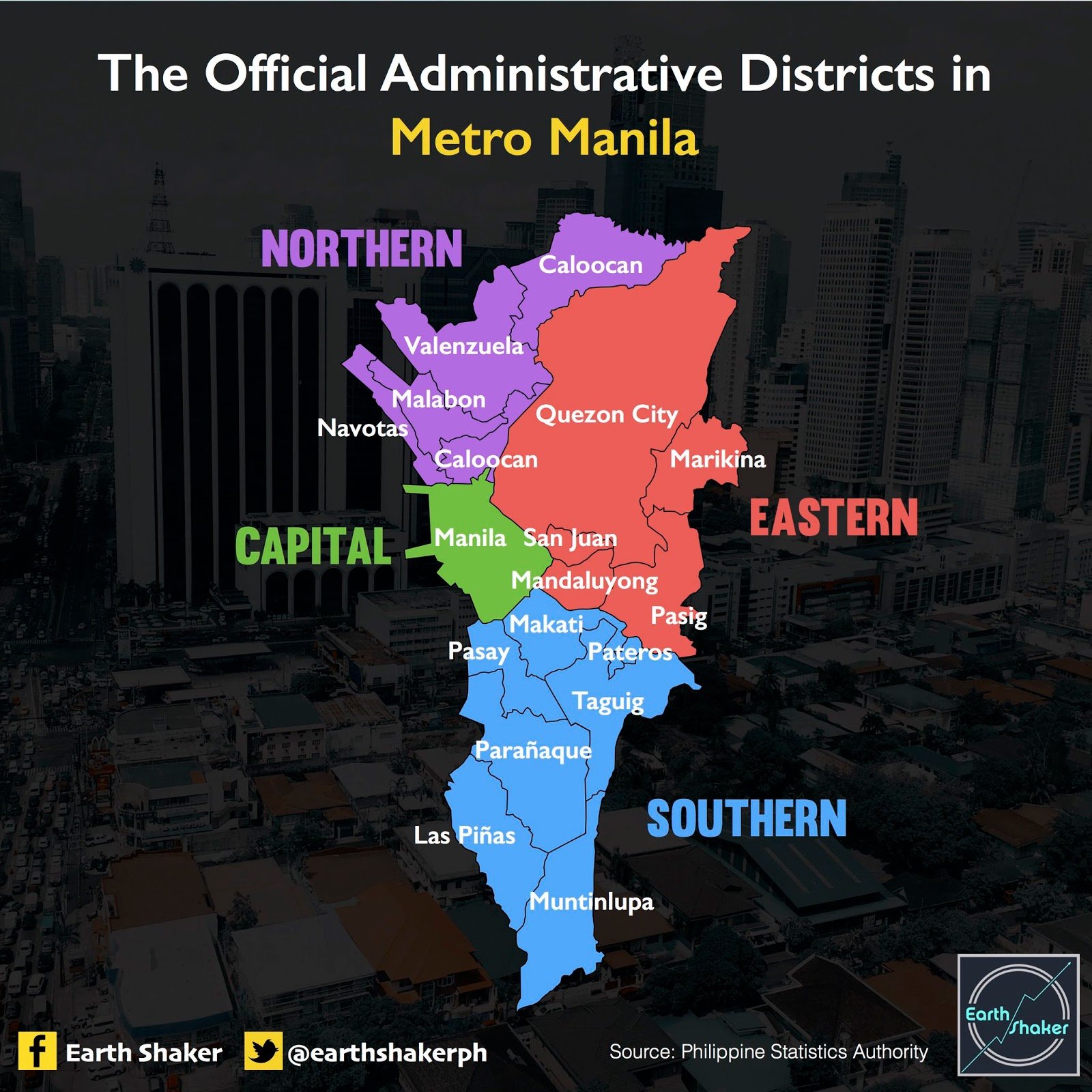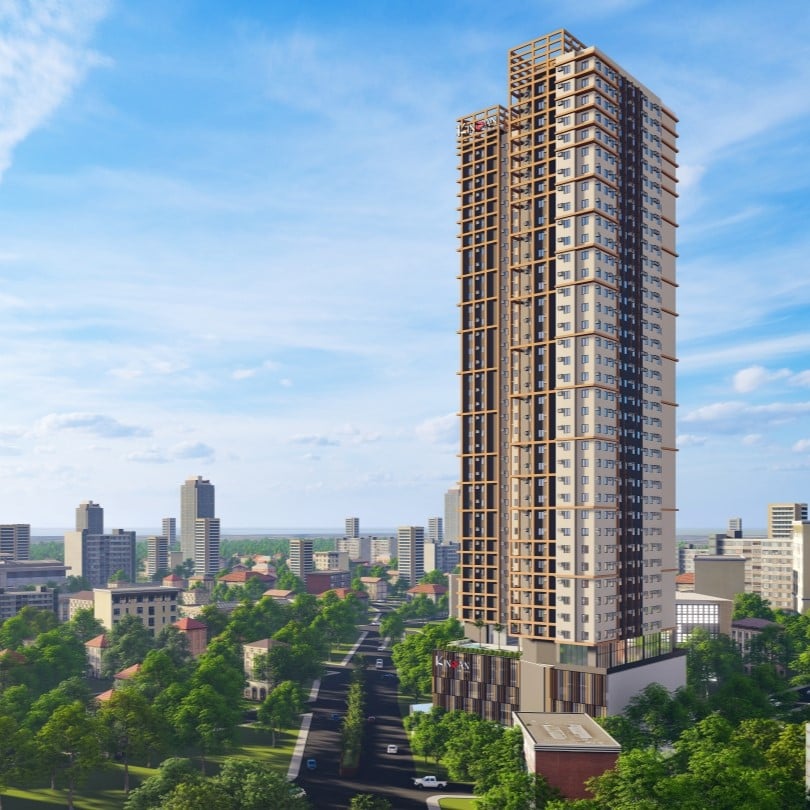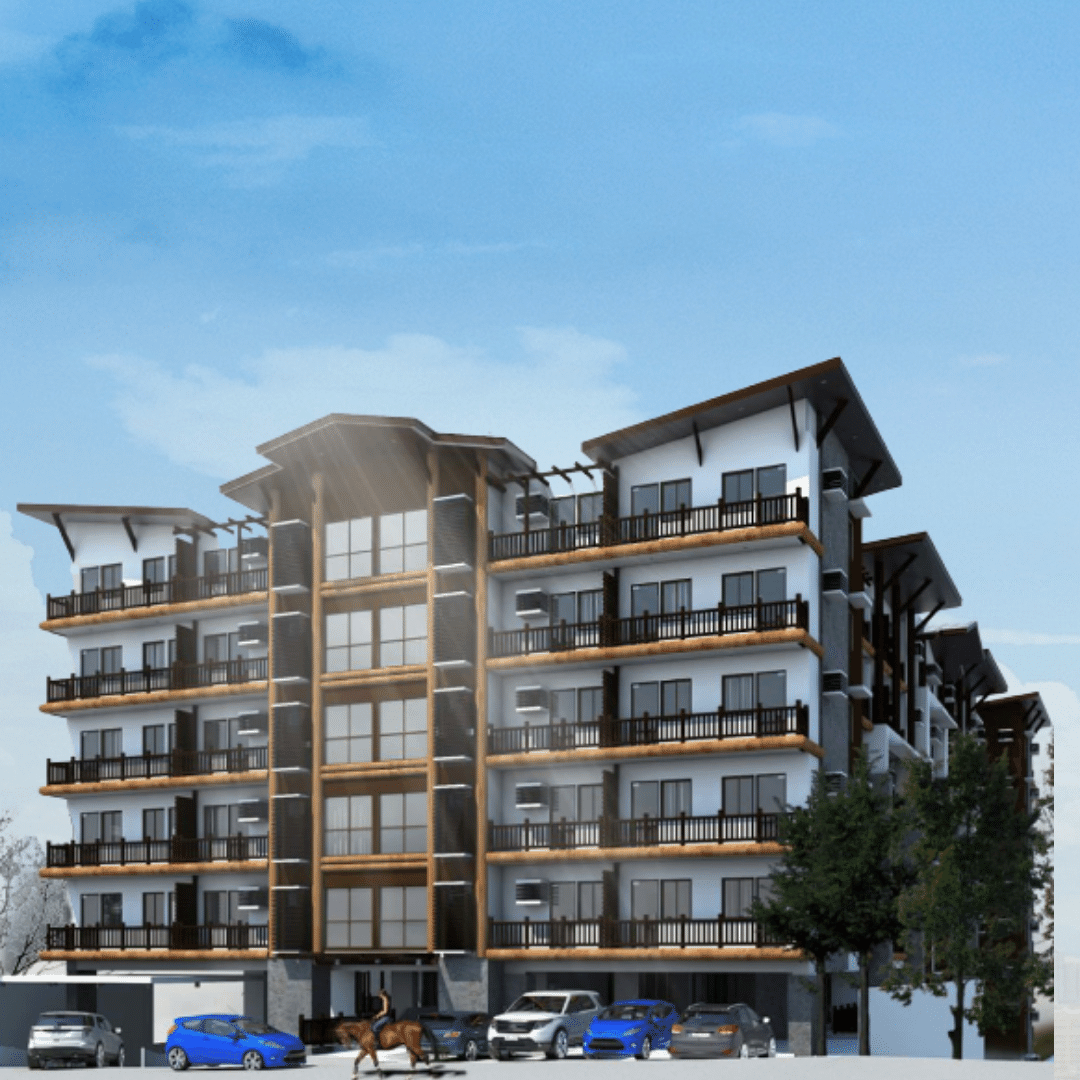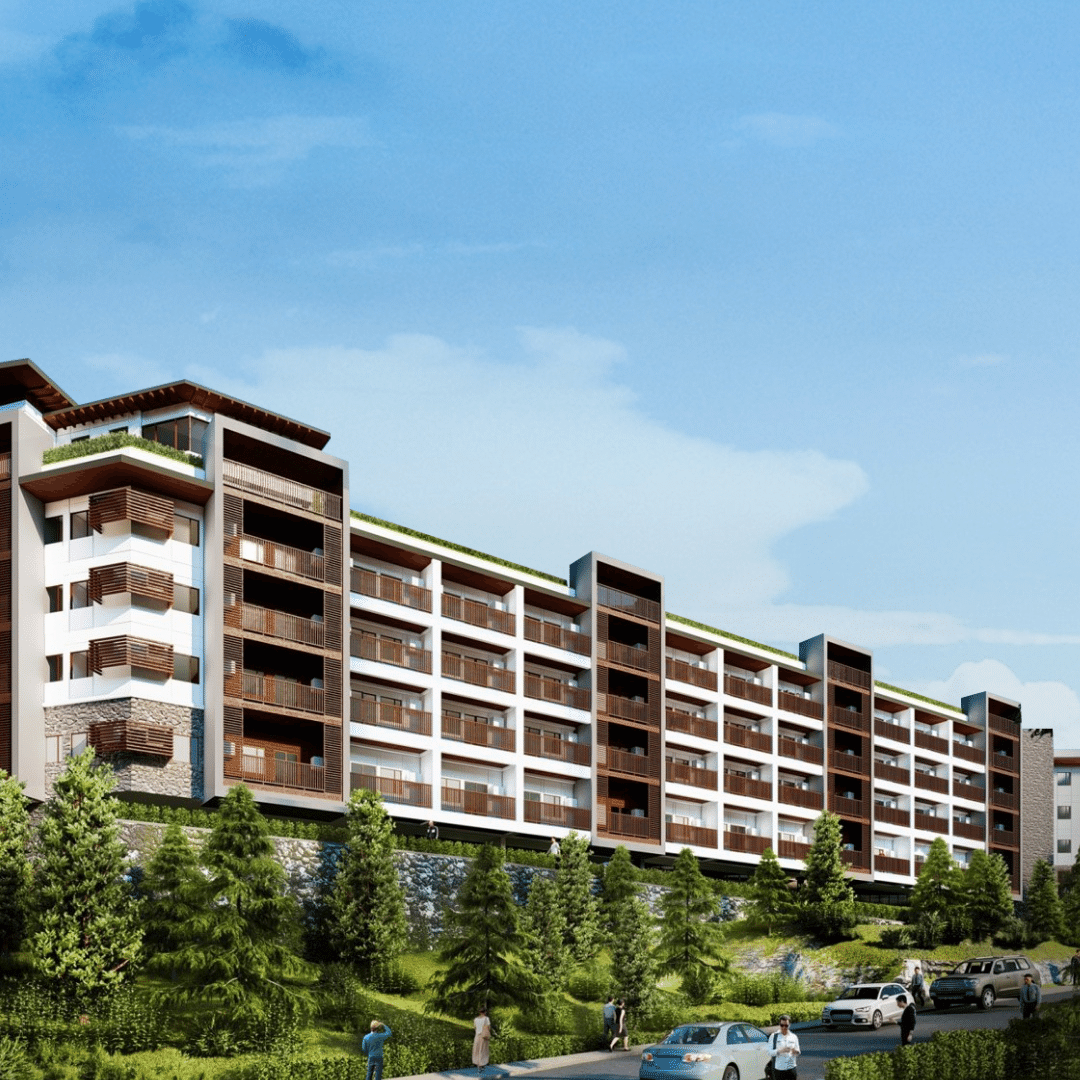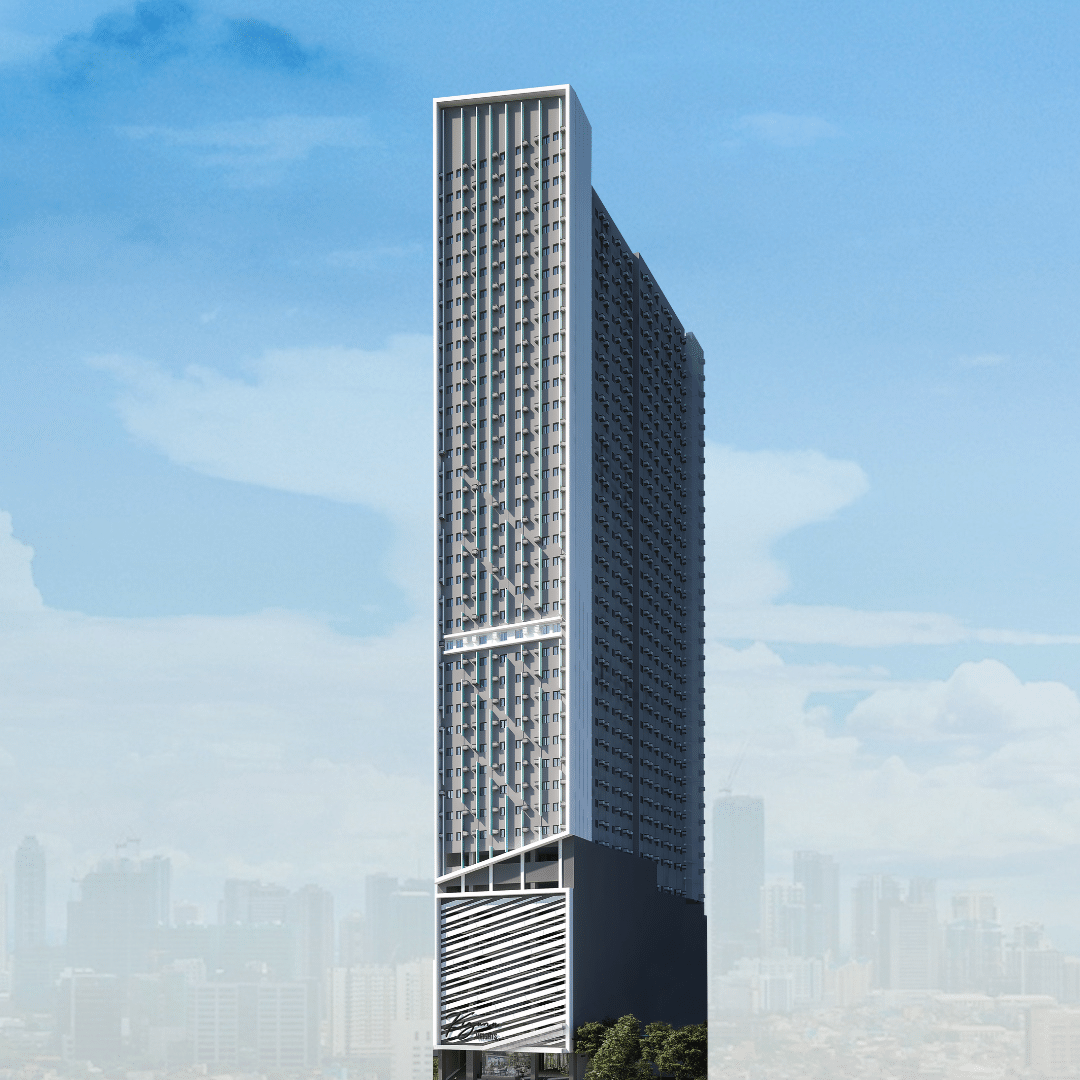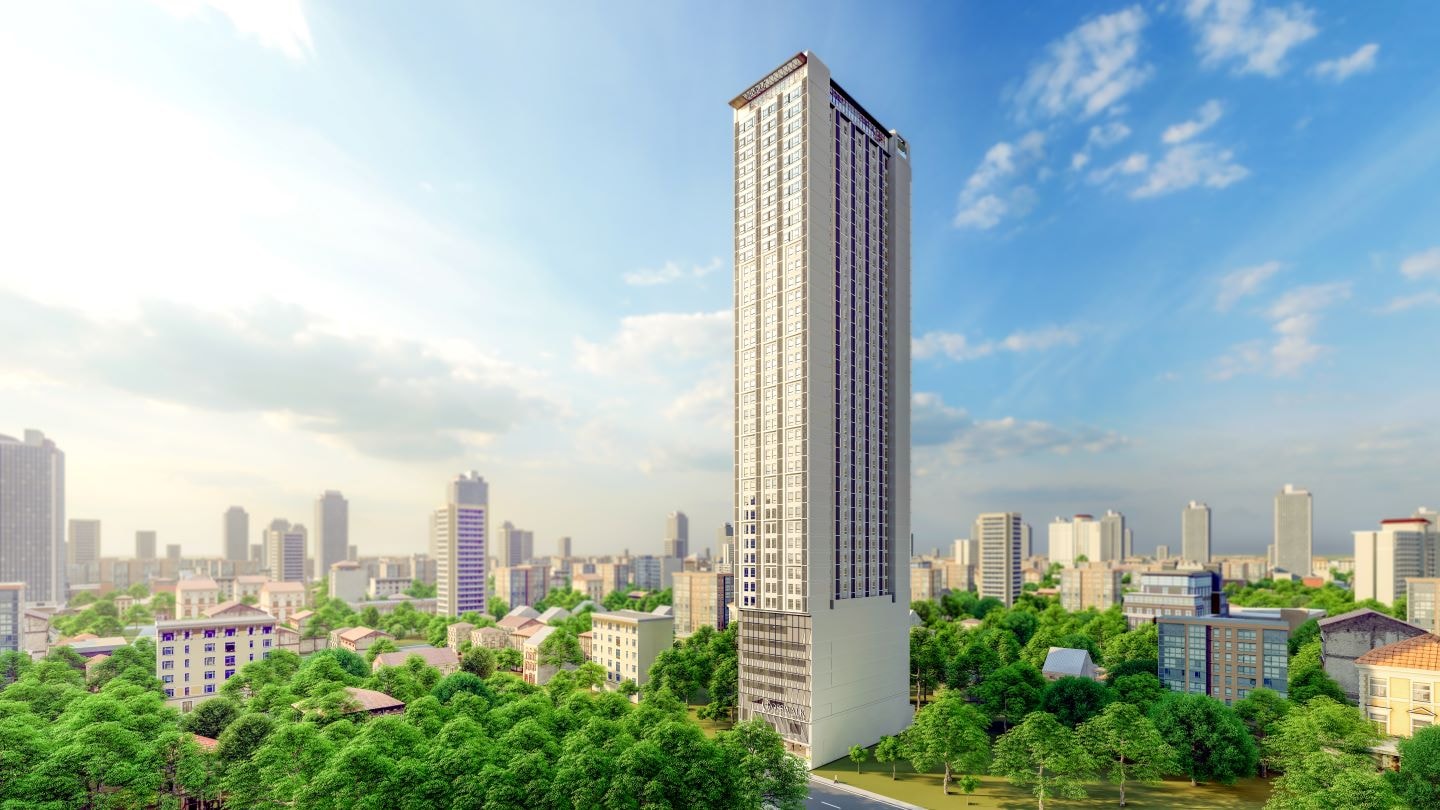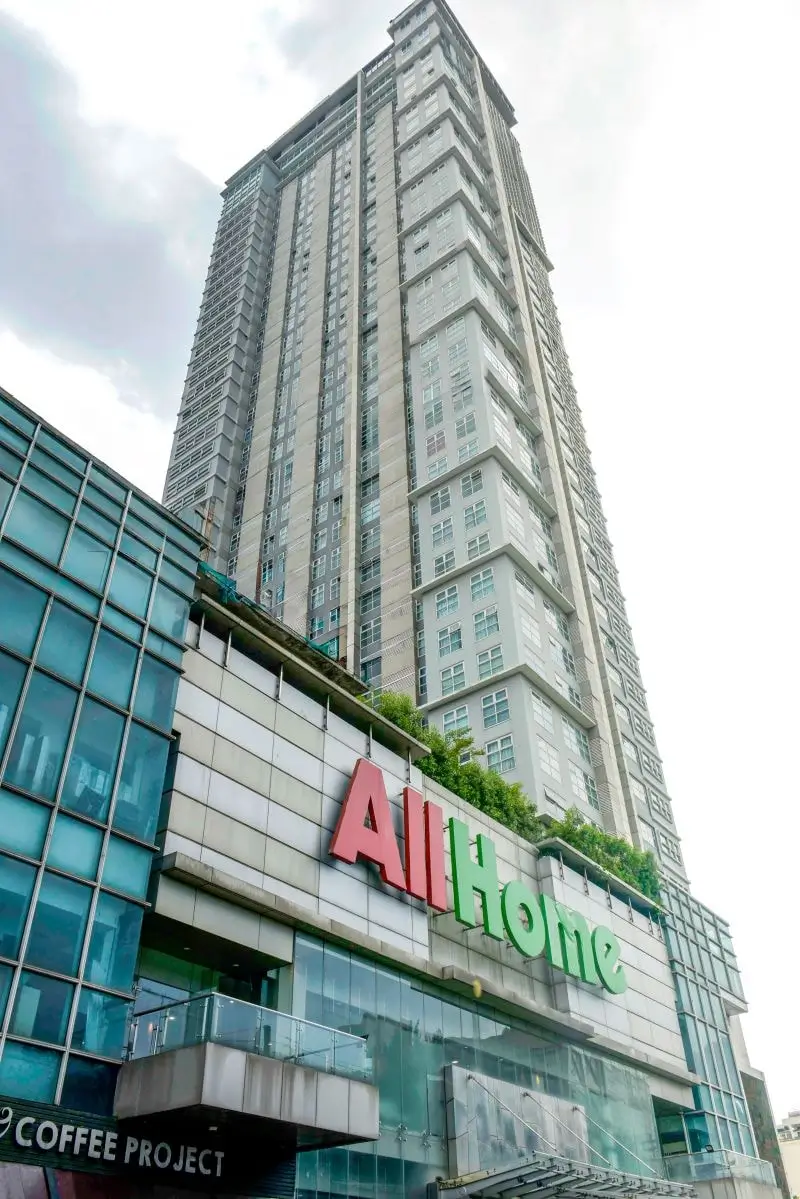Metropolitan Manila, also known as the National Capital Region (NCR) of the Philippines, is situated in the southwestern part of Luzon and is one of the most populous urban areas in the country. It is a highly urbanized region composed of 16 cities and one municipality, with a total of 1,710 barangays, covering an area of approximately 619 square kilometers.
Metro Manila is the center of the Philippines' economy, education, politics, and culture, with a modern city and major business districts, universities, and government institutions located in the area. The region is also home to numerous historical and cultural landmarks, including the historic walled city of Intramuros, the Rizal Park, and the National Museum.
Local Government Units in Metro Manila
Metro Manila is the most heavily populated among the twelve metropolitan areas in the Philippines and ranks eleventh in the world in terms of population. The estimated population of Metro Manila is around 12 million people, but this population number increases during the day to approximately 15 million.
The National Capital Region encompasses the following cities: Caloocan, Las Piñas, Makati, Malabon, Mandaluyong, Manila City, Marikina, Muntinlupa, Navotas, Parañaque, Pasay, Pasig, Quezon City, San Juan, Taguig, and Valenzuela, as well as the municipality of Pateros. The regional center is the City of Manila.
Metro Manila is situated in a flat region of land that the Pasig River and Laguna de Bay drain. The area extends eastward, including the hilly Marikina Valley, but stops short of the low-lying edges of Rizal province.
History of National Capital Region / NCR / Metro Manila
In the time of Spanish colonization, Manila was recognized as one of the original global cities and officially designated as the capital of the Philippines, while the center of colonial power was located in Intramuros. Manila and 23 other municipalities comprised the province in 1898, but it was dissolved, and a large part of it was merged with the newly formed province of Rizal in 1901.
During the Philippine Commonwealth period under American rule, Daniel Burnham, an American architect, and urban designer, was hired to create the Plan of Manila in 1901, which included Binondo, Ermita, Intramuros, Malate, Manila, Pandacan, Quiapo, Sampaloc, San Andres, San Fernando de Dilao, San Miguel, San Nicolas, Santa Ana de Sapa, Santa Cruz, Santa Mesa, and Tondo. On the other hand, Caloocan, Las Piñas, Malabon, Mariquina, Muntinlupa, Navotas, Pasig, Parañaque, San Juan del Monte, San Pedro de Macati, San Felipe Neri, and the Taguig-Pateros area were absorbed into the newly created province of Rizal, with Pasig serving as its capital.
During the war, then-President Manuel Quezon combined Manila and Quezon City with several municipalities, including Caloocan, Las Piñas, Mariquina, Malabon, Muntinlupa, Navotas, Parañaque, Pasig, San Felipe Neri, San Juan del Monte, San Pedro de Macati, and the Taguig-Pateros area to create the City of Greater Manila as an emergency measure. However, the Japanese abolished this with the formation of the Philippine Executive Commission, which governed the occupied regions of the country. The City of Greater Manila served as a model for the current Metro Manila and its Governor.
Metro Manila was officially established through Presidential Decree No. 824 on November 7, 1975, with the creation of the official office of the Metropolitan Manila Commission to oversee the region. Later, on June 2, 1978, Presidential Decree No. 1396 declared the metropolitan area as the National Capital Region of the Philippines. Initially, there were four cities and thirteen municipalities in Metro Manila, but currently, all of the municipalities have become independent charted cities, except for Pateros.
Why is Metropolitan Manila the National Capital Region
Metro Manila is considered the National Capital Region of the Philippines due to its essential role as the country's economic, political, and cultural hub. Its sixteen cities and one municipality contribute significantly to the country's development and growth.
As the country's economic capital, Metro Manila houses several multinational corporations, top universities, and the Philippine Stock Exchange. Many of the country's top universities, including the University of the Philippines and Ateneo de Manila University, are located in the region.
Its economy is diverse, with various industries such as business process outsourcing, financial services, manufacturing, and real estate. It is the country's economic and financial hub, with major shopping malls and business centers, including the Makati Central Business District and Bonifacio Global City, located within its boundaries.
Metro Manila is also the country's political capital, the Philippine government's seat, including the executive, legislative, and judicial branches. The country's highest officials, including the President, reside and work in Metro Manila.
Moreover, Metro Manila is the center of Philippine culture, with various historical landmarks, museums, and art galleries located in business areas in the region. The region's diverse population brings together different cultural traditions and practices, making it an exciting and vibrant place to live in.
Despite being a highly urbanized region, Metro Manila also boasts of natural attractions, including Manila Bay, Laguna Lake, and the Sierra Madre mountain range. The region also has a rich culinary culture, with various street food and traditional Filipino dishes available in different parts of the area.
Overall, the National Capital Region is vital to the Philippines' development and growth, and its significant contributions to the country's various facets make it an indispensable part of the nation.
Condo Units in Metro Manila
Vista Residences, a leading property developer in the Philippine condominium market, offers a range of condominium complexes in Metro Manila if you are considering purchasing a home in the region. With a reputation as a top homebuilder, Vista Residences offers high-quality condominiums constructed using premium materials and equipped with convenient amenities.
Vista Residences offers both pre-selling and ready-for-occupancy condominiums located in various areas of Metro Manila, such as Makati, Mandaluyong, Ortigas, Quezon City, Taguig, and Pasig. They also have available condominiums in Baguio, Cebu, and Cagayan De Oro. Students and young professionals highly seek these condominiums due to their prime locations near universities and business districts.
